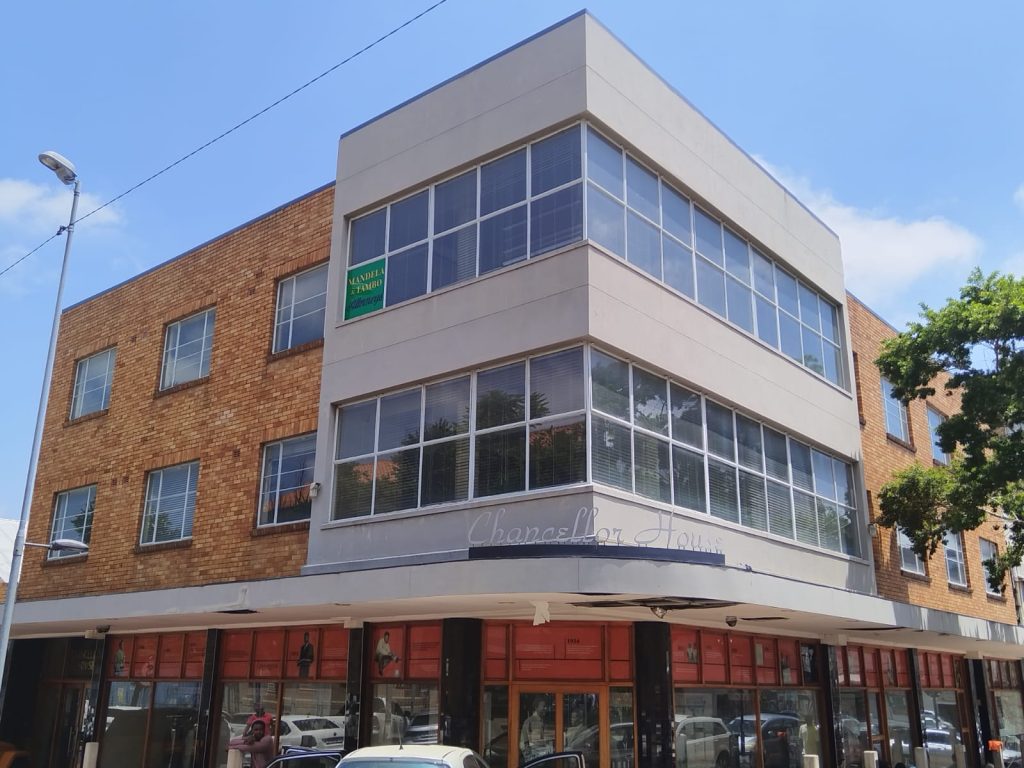Three-bedroomed house with corrugated corrugated iron roof. Dating from around 1916, the house was unconventionally orientated for the time, standing on a corner with its back to the street. A spacious verandah extending over the length of the house on the eastern side overlooked a garden with occasional fruit trees.
The house was built ca. 1916 for William Russell, a Scots mechanical engineer. The site came to prominence in 1926 as the scene of a murder dubbed the “Bellevue Tragedy” by the newspapers of the day. Here at the house of his mother and her new husband, Herman Charle Bosman shot and killed his step-brother David Russell.
Born in the Cape in 1905, Herman Bosman grew up in Johannesburg, attending Jeppe Boys High, the University of the Witwatersrand and Normal College where he qualified as a teacher. The twenty one year old Herman Bosman took up his first teaching appointment in the Groot Marico district. His six month sojourn in this remote corner of the Western Transvaal was to provide Bosman with the setting for the Schalk Lourens stories for which he became famous.
In 1925 Herman Charles Bosman’s mother Elisa married William Russell, joining him at the Isipingo Street house. A widower for 17 years, William Russell had three of his adult children living with him: David and his sisters, Peggy and Jean. In 1926 they were joined by Herman’s brother Pierre, with the two families telescoped awkwardly into the cramped quarters of the Bellevue house.
While at home in the Russell house for the July school holidays, Herman shared a small bedroom with his step-brother David (23). The household was torn apart at 1 am on the night of 17 July when Herman shot David Russell with a hunting rifle he brought back from the Marico. Bosman fired into the darkened bedroom where David and Pierre were embroiled in a fight. He then walked in a daze towards the kitchen where he immediately attempted suicide by slashing his own throat with a carving knife. There followed a highly publicized court case, but the motive for the shooting was never fully revealed, with Bosman maintaining through the trial that the whole affair was an accident. Bosman was convicted for murder and sentenced to death. Bosman’s words to the court after sentence had been passed included the statement: “In that tragic moment, the happenings of which are still not quite clear to me, I was impelled by a wild and chaotic impulse, in which there was no suggestion of malice or premeditation”. The death sentence was later commuted and Bosman served some four years in prison.
In later years the house became the home of the Myersons, where Eugene Myerson and his brother grew up with their parents. While Eugene’s father was away serving with the SA Air Force during Worlds War II, his mother purchased and moved into the house on Isipingo Street. For some 50 years, the house became the Myerson family home.
The Myersons counted prominent anti-apartheid activists among their family friends.
During the apartheid period, frequent visitors to the house included Communist Party leader Braam Fischer. It was also in this era that the notorious room occupied by Bosman was used to hide a family friend Julius First, the father of journalist and activist Ruth First (the wife of the late Joe Slovo before her assassination). As recalled by Eugene Myerson:
“ He stayed with us before he was smuggled out of the country. When my parents took him to the border, hidden under blankets in the back seat, they had to pretend to be a courting couple to avert police suspicion when they were stopped at a police road block” (North Eastern Tribune, 12 January 1998).
National Heritage Resources Act, 1999: Provisional Protection status, July 2011.

A culmination of research gathered over many years, the Online Johannesburg Heritage Register is being launched on Nelson Mandela Day 18 July 2025.
Among the many heritage sites featured is Chancellor House, the downtown offices of Mandela and Tambo Attorneys in the 1950s. After having been vacant and shuttered for more than a decade, this iconic building is being revived and brought to life once again as offices for the Community Development Department, which oversees the City’s Arts, Culture & Heritage Services.